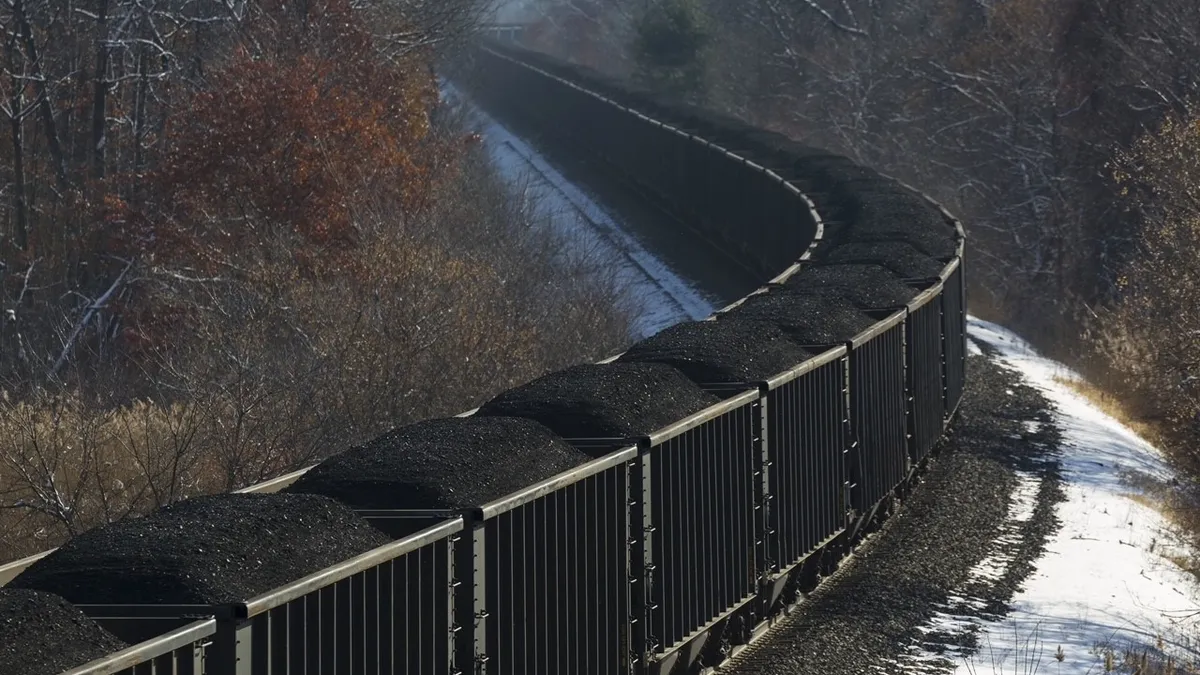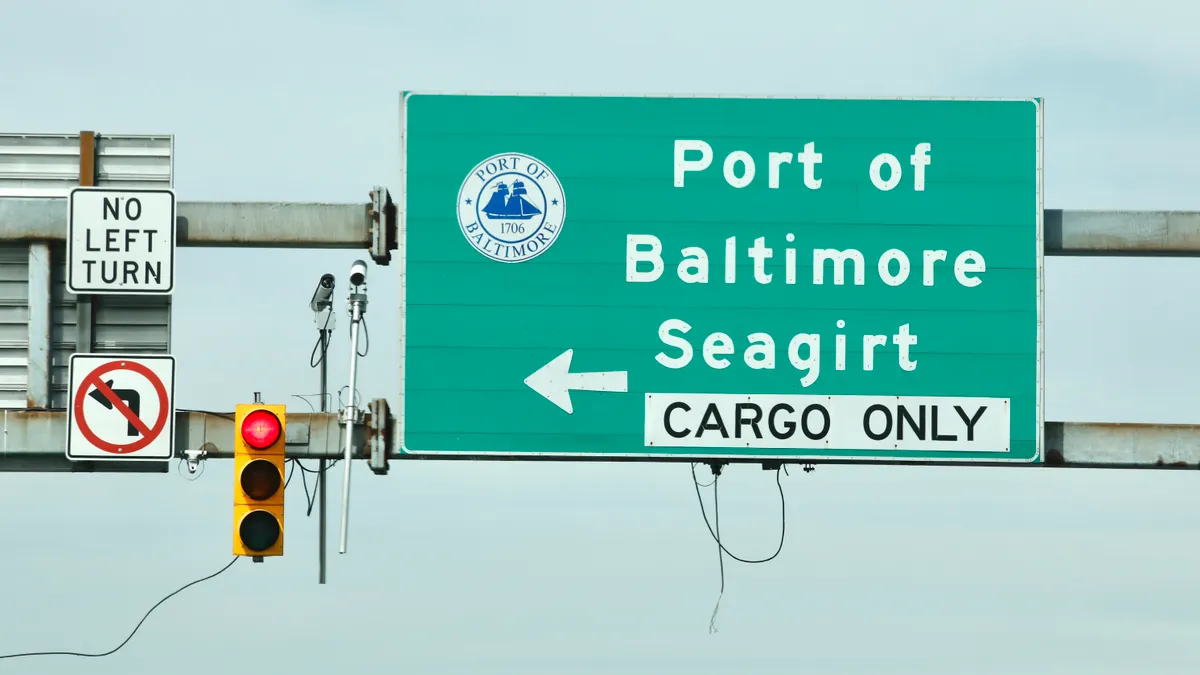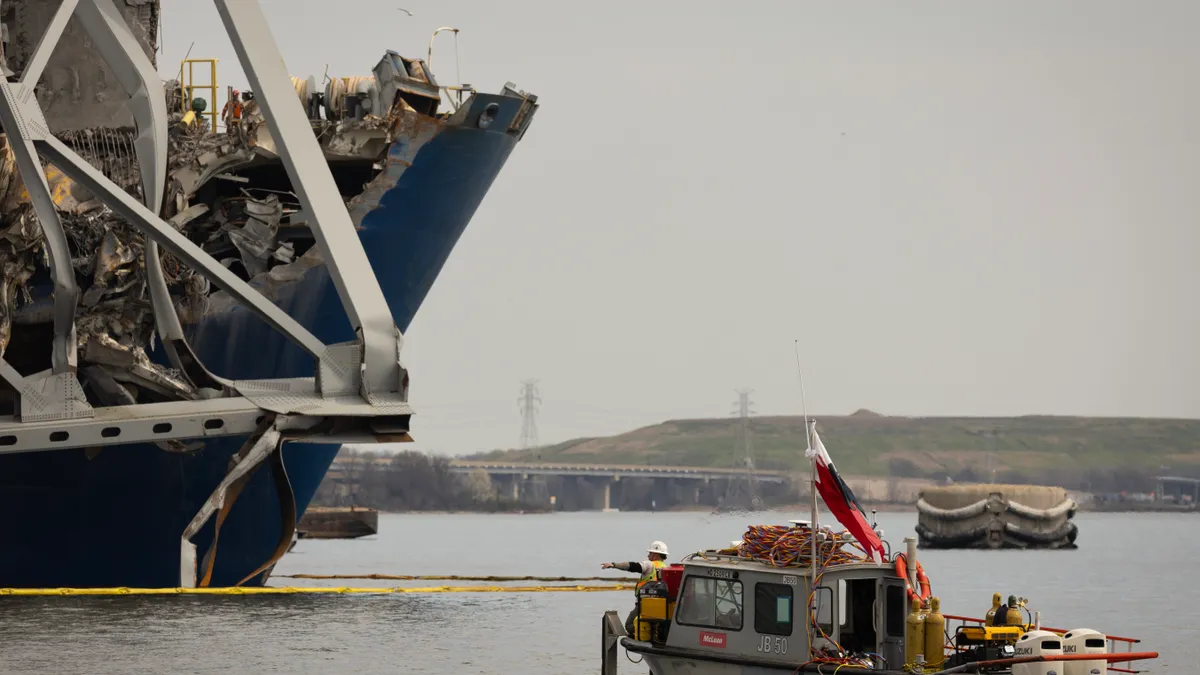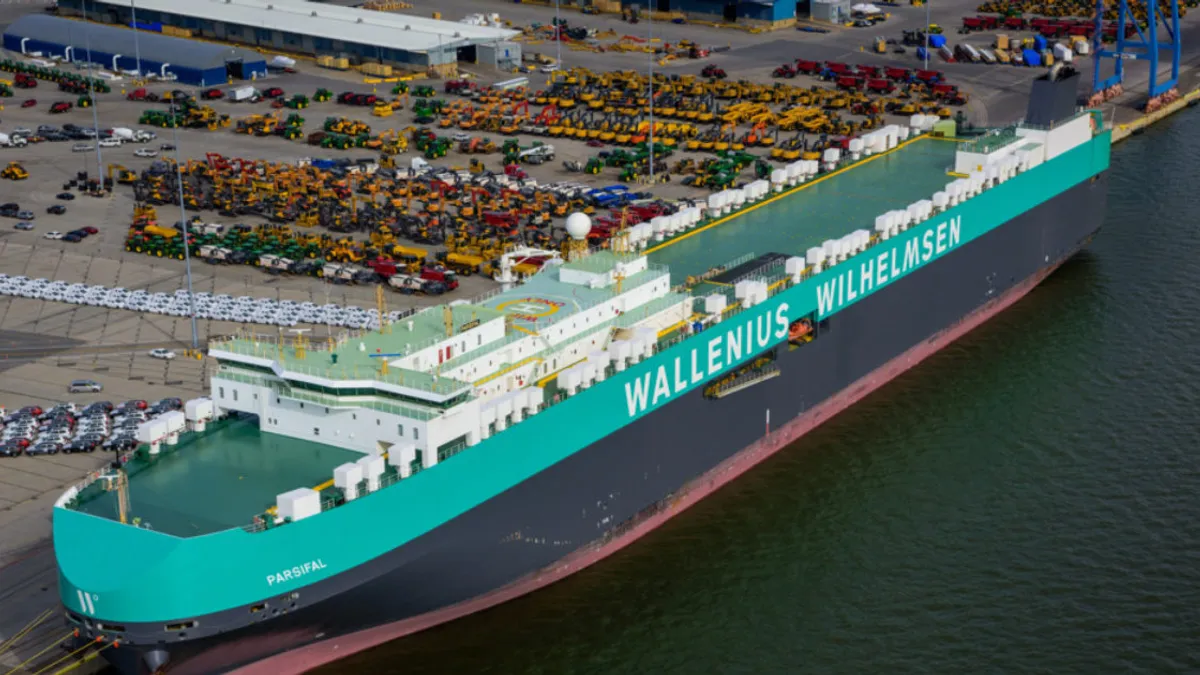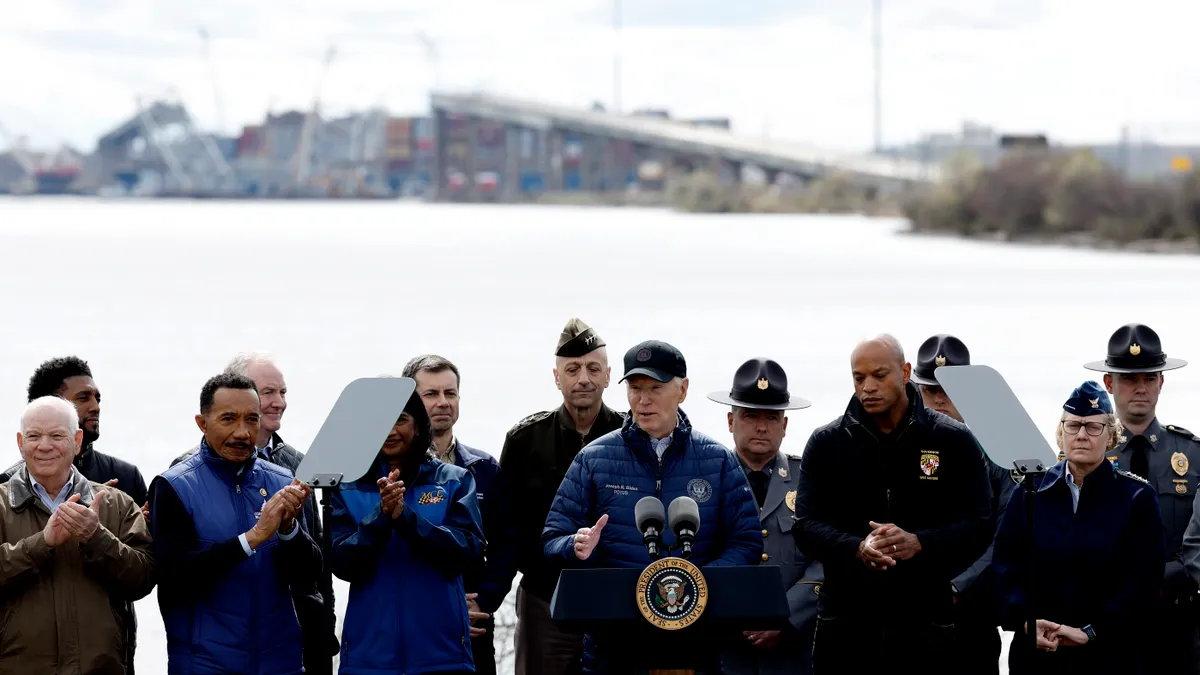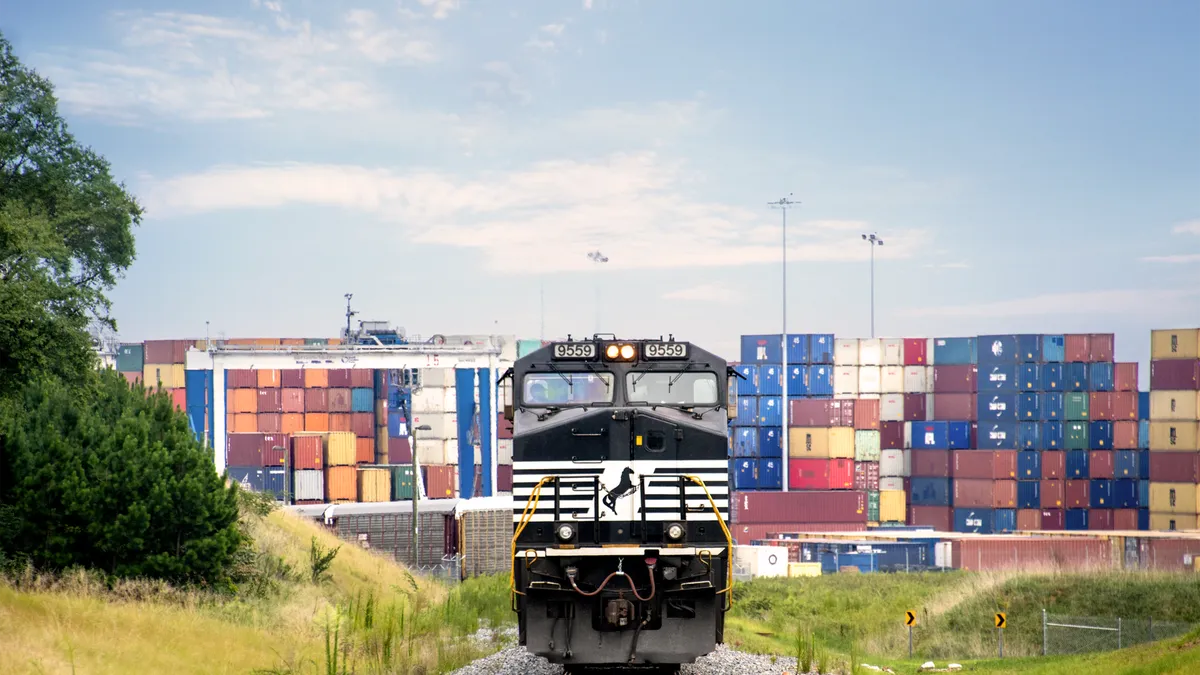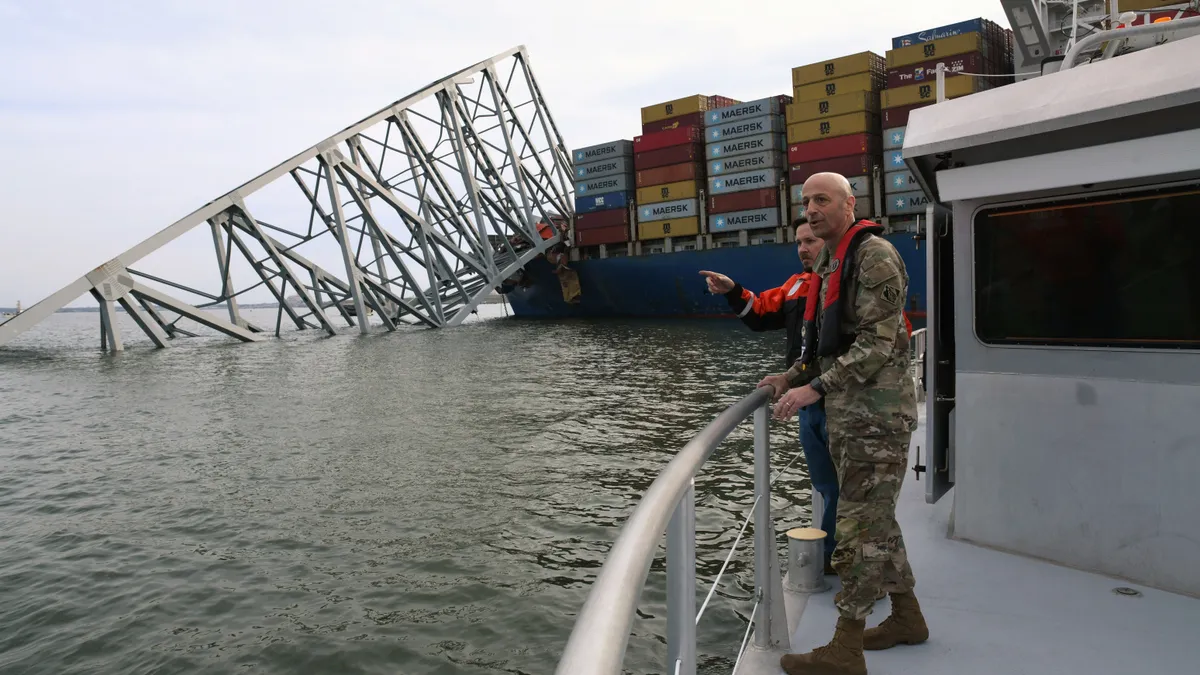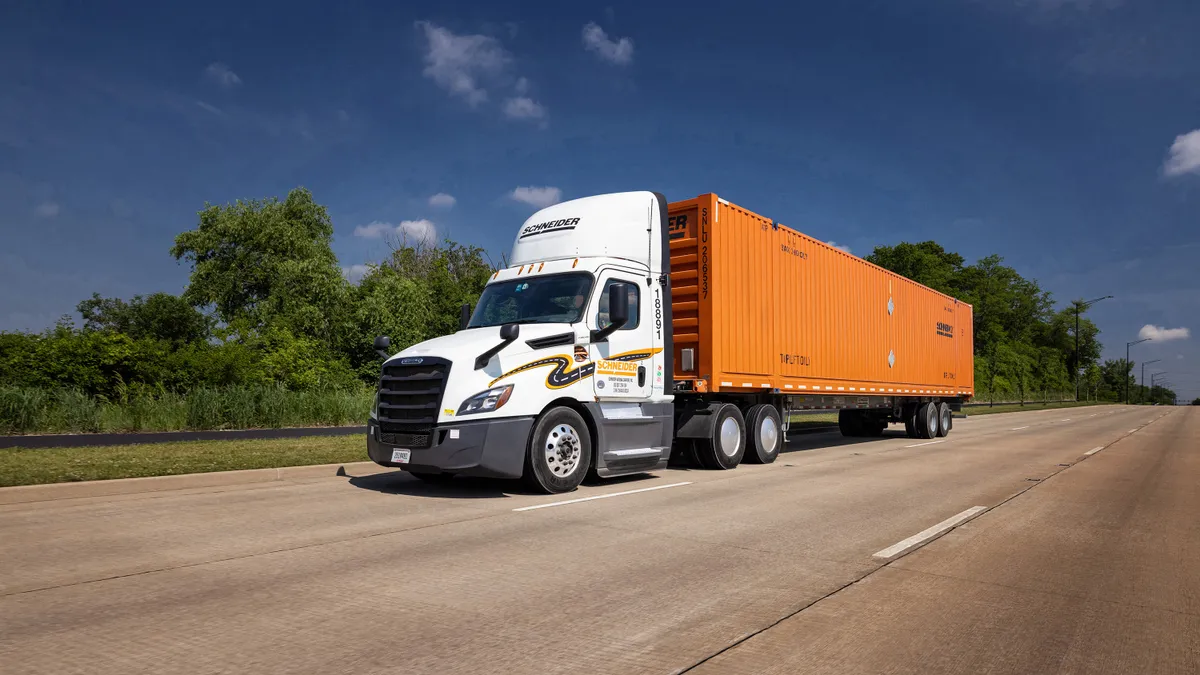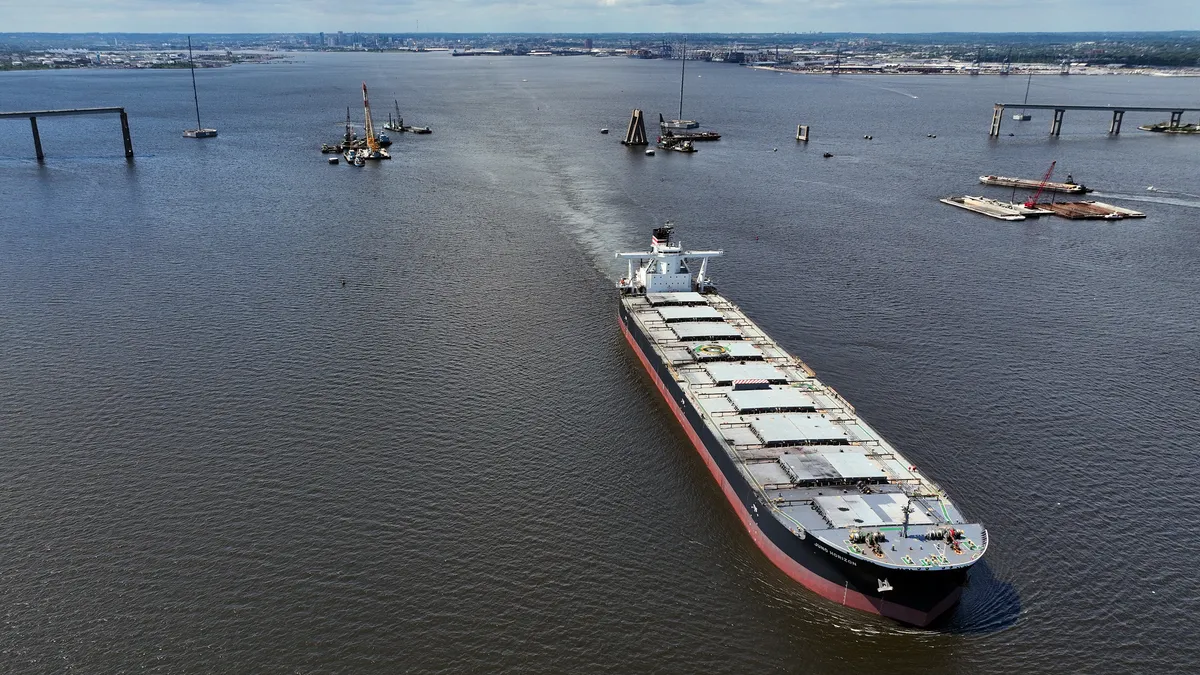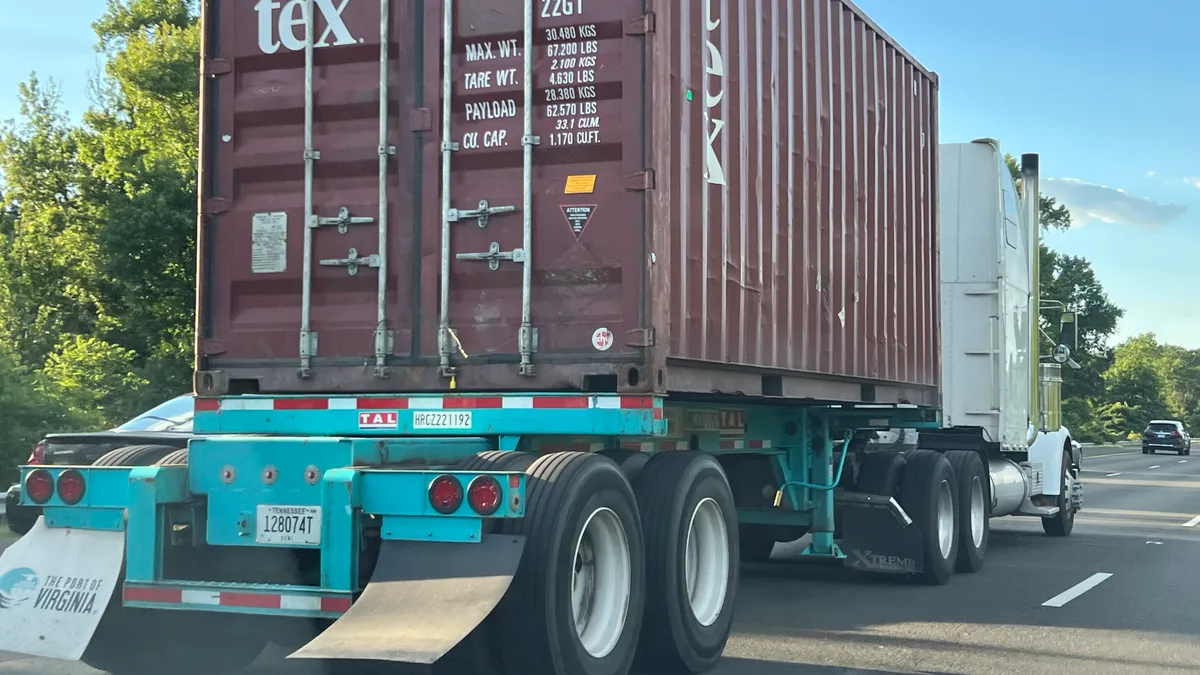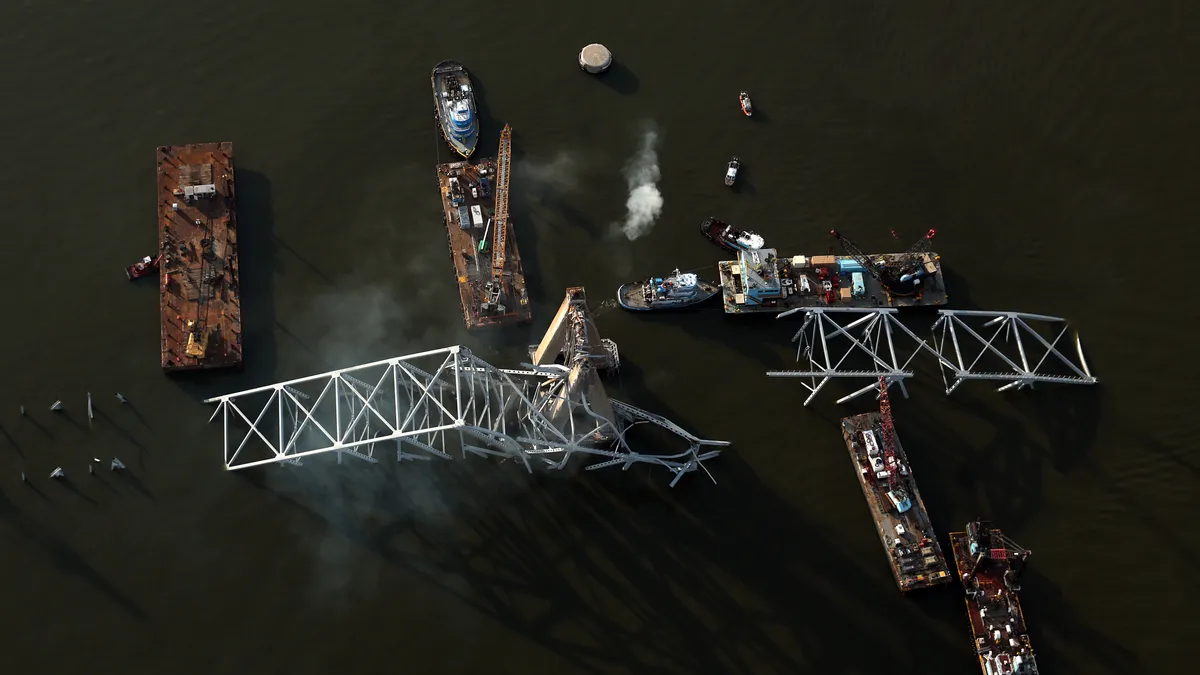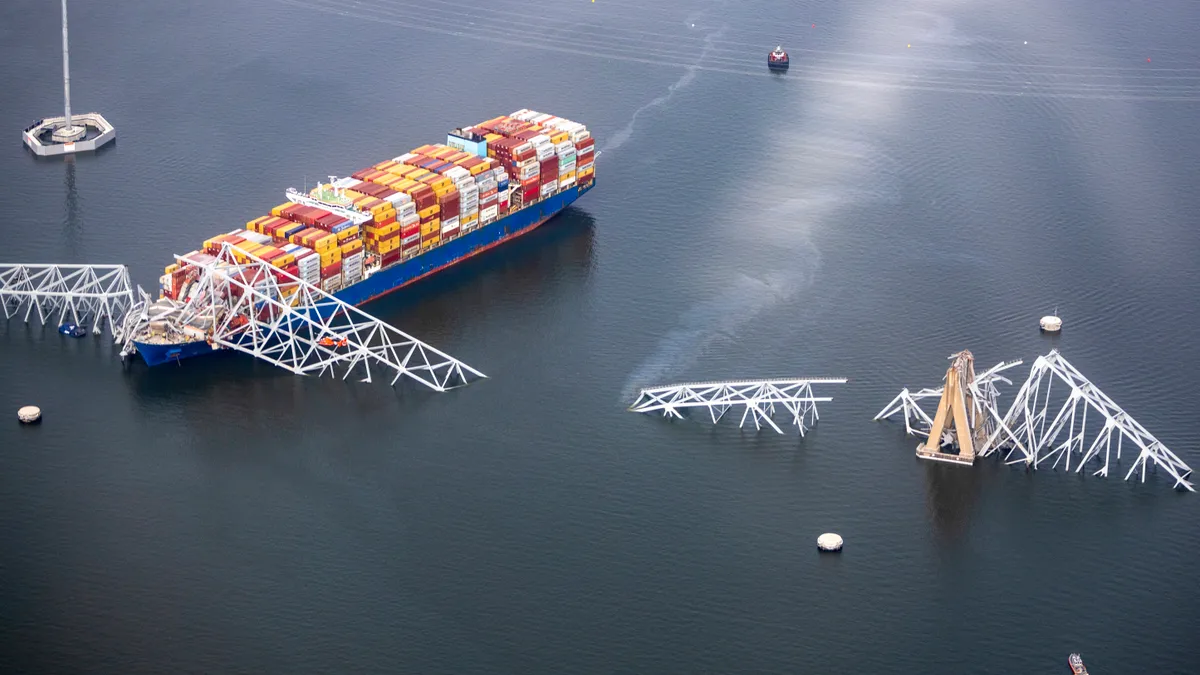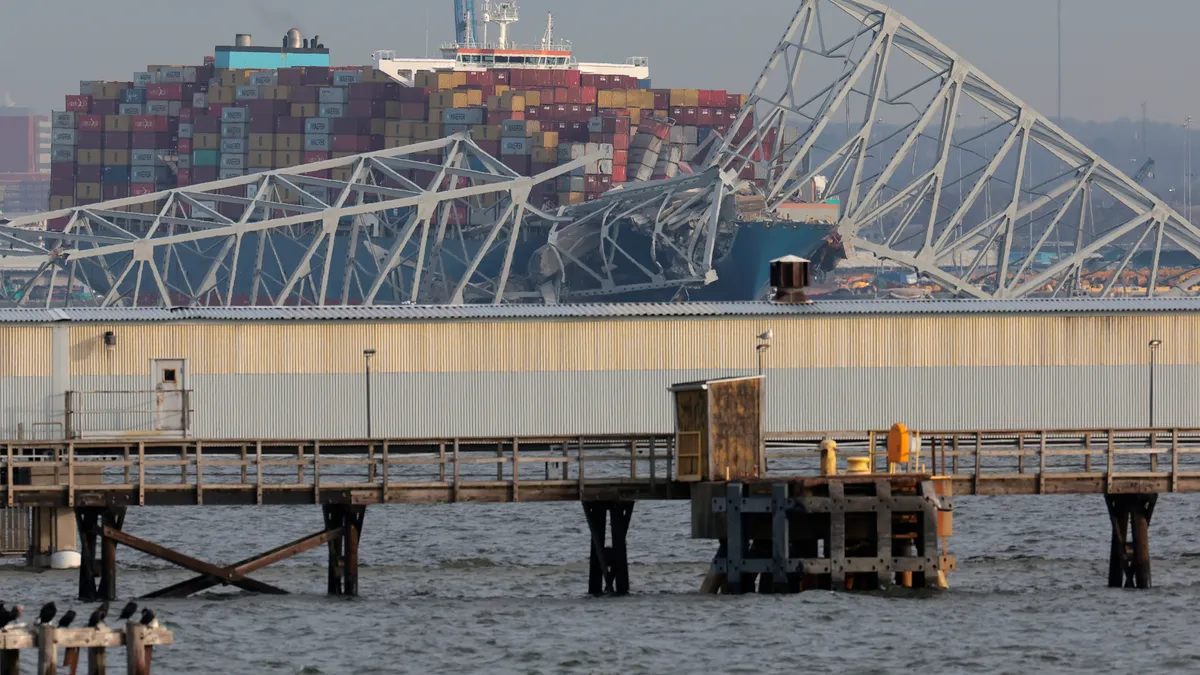When the collapse of Francis Scott Key Bridge disrupted operations at the Port of Baltimore on Tuesday, major railroad carriers kept freight flowing despite the inevitable risk of delays.
The disaster has led to logistics turmoil near the port, particularly in the form of short-term disruptions for intermodal containers. However, it’s likely those problems won’t last long, Lawrence Gross, president and founder of Gross Transportation Consulting, wrote in an email to Supply Chain Dive.
“In the near term it will be quite disruptive as cargo is diverted from Baltimore,” Gross said. “However, the regional alternatives, (NY/NJ, Philadelphia, Norfolk) collectively should have sufficient capacity to be able to absorb this volume at current levels without creating substantial congestion.”
But this also could mean intermodal loads originating and terminating in the Baltimore area will incur substantial incremental drayage expenses, he said.
CSX issued a customer advisory Tuesday, alerting customers the incident would result in late shipments.
Norfolk Southern’s website did not show a customer advisory regarding Baltimore port service. A spokesperson for the railroad said its operations were not significantly disrupted by the incident but is communicating with customers who may have affected freight.
Coal, which is stored at the CSX-operated Curtis Bay Coal Pier, is among the commodities transported from the port by the railroad.
Contingency plans are in place, which includes dispatching additional trains to the port if needed to ensure coal storage capacity isn’t exceeded, CSX said in an emailed statement to Supply Chain Dive. CSX said it intends to keep shipping coal from the port but is regularly assessing the situation.
While international intermodal shipments have stopped at the port, CSX said domestic intermodal service to and from other yards in Baltimore continue. The railroad added it has contacted shippers with diverted international containers to make other accomodations.
Norfolk Southern said other East Coast ports have capacity to keep freight flowing, noting that “significant supply chain events demand a rapid response approach, frequent communication and innovative solutions.”
“Our network touches every major port on the eastern seaboard, and we proactively reached out to help our customers and provide alternate routing solutions,” the Norfolk Southern spokesperson said.



